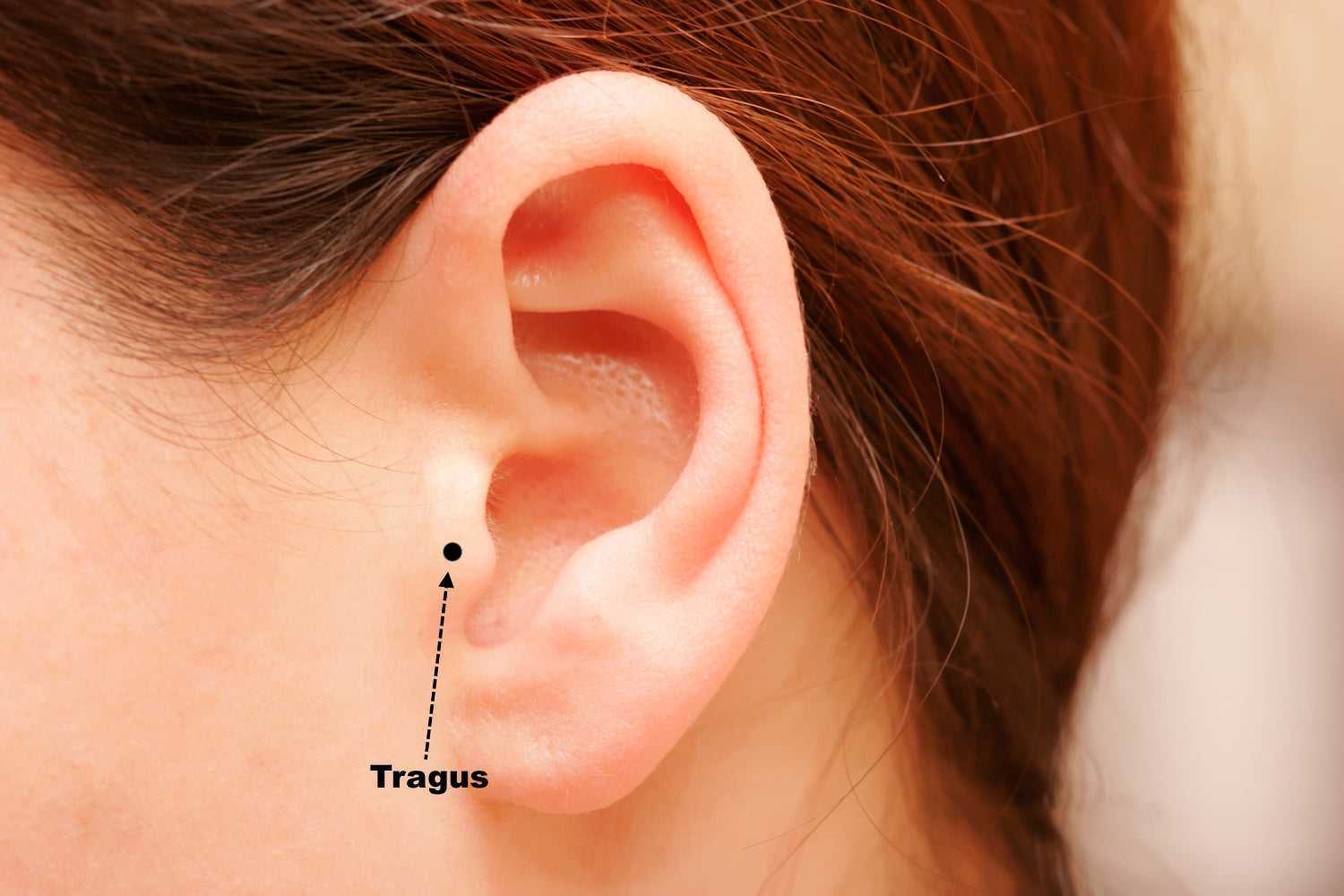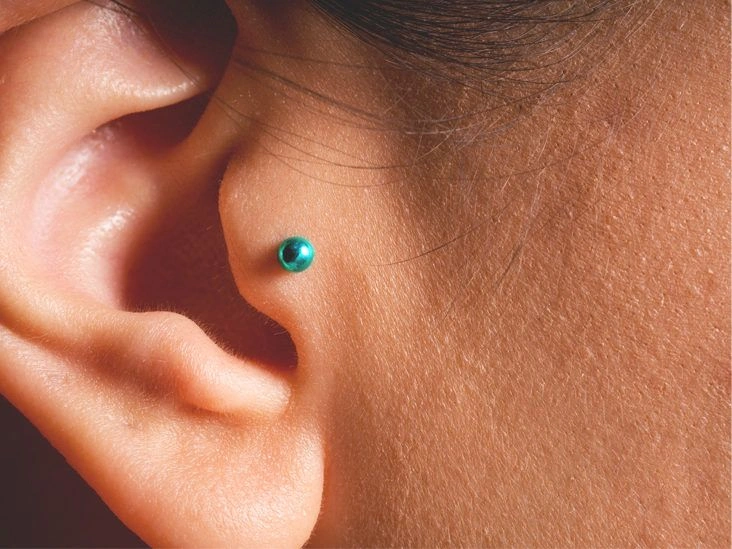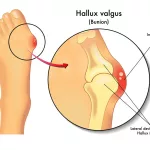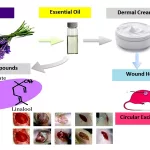Looking after a new piercing is a key part of allowing it to heal properly. Mild tenderness and sensitivity are normal, but poor aftercare can result in infection.
The tragus is the small, firm flap of cartilage that partly covers the ear opening, helping shield the passage that leads to inner structures such as the eardrum.

As with many cartilage piercings, getting a tragus pierced can be uncomfortable. But how intense is the pain, precisely? And how long will it persist? Read on to learn what to anticipate regarding pain with a tragus piercing.
How much does a tragus piercing hurt?
The tragus consists of a thin layer of pliable cartilage. That means there’s generally less soft, nerve-rich tissue than in other ear regions, so pain is often less pronounced.
However, cartilage is tougher to penetrate than regular skin, so the piercer may need to use more force to push the needle through, which can increase discomfort—particularly if the piercer lacks experience.
As with any body modification, pain levels differ between individuals. For most people, the worst of the pain is felt right when the needle enters—this sharp sting happens as the needle cuts through the outer skin and nerve endings.
You might also notice a brief pinching feeling as the needle passes through the tragus.
The pain from the actual piercing is usually short-lived and often subsides within minutes after the procedure.
How is a tragus piercing done?
During a tragus piercing, the piercer will typically:
- Sanitize your tragus with sterile water and a medical-grade antiseptic.
- Mark the intended piercing spot with a non-toxic pen.
- Push a sterilized needle through the marked area of the tragus and out the opposite side.
- Place the chosen jewelry into the new hole.
- Address any bleeding from the piercing.
- Clean the site again with water and antiseptic to ensure it’s completely clean.
How much does it cost?
The price for a tragus piercing generally falls between $20 and $50, depending on factors such as:
- the piercer’s level of expertise
- the studio’s location and popularity
- the kind of jewelry selected
Note: This range usually doesn’t include aftercare products or a tip. Jewelry costs can vary significantly and may raise the total price.
How long will the pain last?
Although pain during the piercing itself usually fades within minutes or hours, you may experience some lingering soreness as the site heals. Remember that new piercings are essentially open wounds.
To reduce discomfort during healing, avoid putting pressure on the area. This can mean sleeping on one side, holding your phone to the opposite ear, and skipping tight hats for a few months.
A completely healed tragus piercing should not hurt unless it becomes infected or gets snagged.
How long does it take to heal?
Tragus piercings commonly take about 3 to 6 months to heal, though in some cases healing can extend up to a year.
Following your piercer’s aftercare guidance will help promote steady healing.
Tragus piercing aftercare and best practices
It’s normal to observe the following signs during the first several weeks after getting pierced:
- tenderness or sensitivity at the site
- redness
- warmth around the area
- light-colored or yellowish crusting near the piercing
Here are some recommended dos and don’ts for tragus piercing aftercare:
- Don’t touch the piercing unless your hands are clean to prevent introducing bacteria.
- Don’t apply soap, shampoo, or disinfectants to the site during the first day.
- Don’t remove or handle the jewelry roughly for about 3 months until the piercing has healed.
- Don’t use alcohol-based cleaners on the wound.
- Don’t use fragranced lotions, powders, or creams that include synthetic ingredients.
- Don’t submerge the piercing in water for at least 3 weeks. Careful showering is okay, but avoid swimming.
- Don’t rub the piercing dry after cleaning. Gently pat it dry with a clean cloth or paper towel to prevent abrasion.
- Do rinse away any crust with warm, clean water and mild, unscented soap.
- Do soak the area in warm saline or salt water and then gently pat it dry with a clean towel at least once daily (after the first day).
Possible side effects and precautions
All piercings carry potential risks, and tragus piercings are no different.
Be alert for these complications:
- Infection. An infected tragus piercing will be painful and may show persistent redness, heat, or bleeding. It can produce dark, foul-smelling discharge and may cause fever.
- Bloodborne infections. If you use a reputable professional who uses sterile, single-use needles, risk is low. Reused or unsterilized needles can transmit infections like hepatitis B and C or HIV.
- Bumps. Cartilage piercings can develop lumps such as keloids, pustules, and granulomas.
- Allergic reaction. Metal allergies, especially to nickel, are common. Jewelry containing nickel may cause itching, redness, and blistering. A piercer can help you pick hypoallergenic options.
- Rejection. Rarely, the body may expel the jewelry, treating it as a foreign object. Signs include the hole widening or skin flaking or thickening around it.
- Catching or tearing. The ear is prone to accidental snags (from clothing, phones, hats). Take care after getting a tragus piercing to avoid catching the jewelry.
If you experience any of these problems, contact a healthcare provider promptly to prevent worsening complications.
When to see a doctor
Some pain is expected after a piercing, but consult a healthcare professional if the pain doesn’t ease after a few days or intensifies with time.
Seek medical attention if you notice:
- warmth or throbbing around the piercing
- a dull, worsening ache that becomes intolerable
- dark yellow or green discharge from the site
- uncontrollable bleeding
- pain or discomfort spreading to other areas of the ear or into the ear canal
The bottom line
Tragus piercings generally hurt more than earlobe piercings because additional force is often needed to push the needle through cartilage.
However, that discomfort usually fades quickly—within minutes. Mild soreness during healing is common, especially if the area is pressed, but most people find it manageable.
If you notice persistent throbbing or the pain becomes severe, contact a healthcare professional right away, as these signs can indicate infection or rejection.


















Leave a Reply
You must be logged in to post a comment.